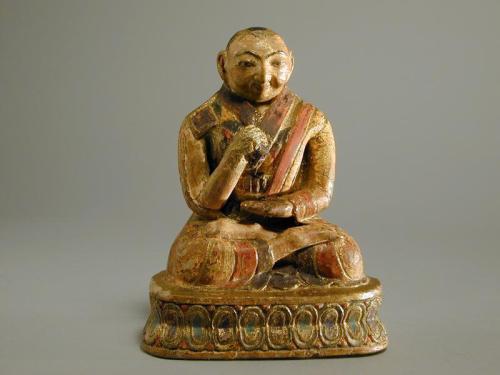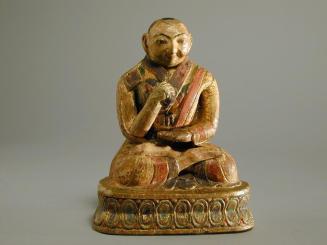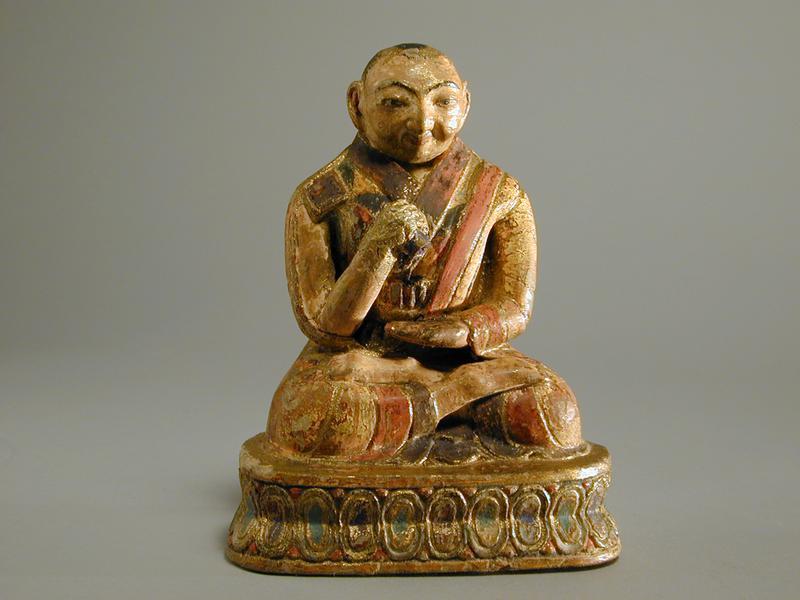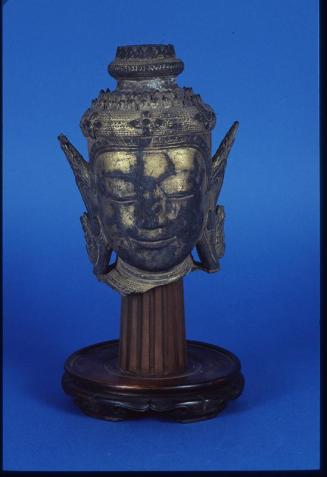Statue of Zanabazar (1635-1723), first Bodegegen or Religious Head of Mongolia
Date1825 c
Place of ManufactureAsia
MediumMaterial: paper mache; paint; wood
DimensionsOverall: 15.4 x 11.8 x 8.4 cm
ClassificationsFINE ART
Credit LineAsian Art Purchase Fund
Object number1996.024.001
DescriptionZanabazar, a lineal descendent of Genghis Khan, became the first Jebtsundamba Khutuktu (meaning Living Buddha) or Bodgogegen of Mongolia. This position as religious head of the country was similar to that of the Dalai Lamas in Tibet. He enjoyed tremendous adoration from the ordinary people of Mongolia and was paramount in holding the Mongolians together during their vassalage to the Manchus who ruled China during the Qing Dynasty (1644-1911). Zanabazar established his base at Urga (present-day Ulan Bator). In addition to being the religious head of the nation, he is was an extremely good artist and noted as a skilful sculptor and architect.
This statue represents a rare portrait of Zanabazar, who was considered the greatest of the eight Jebtsundamba Khutuktu. The sculpture shows him in his later years. He wears the typical patchwork monks' mantle known as kesa.
Status
Not on viewAndo Hiroshige
Mizuno Toshikata















